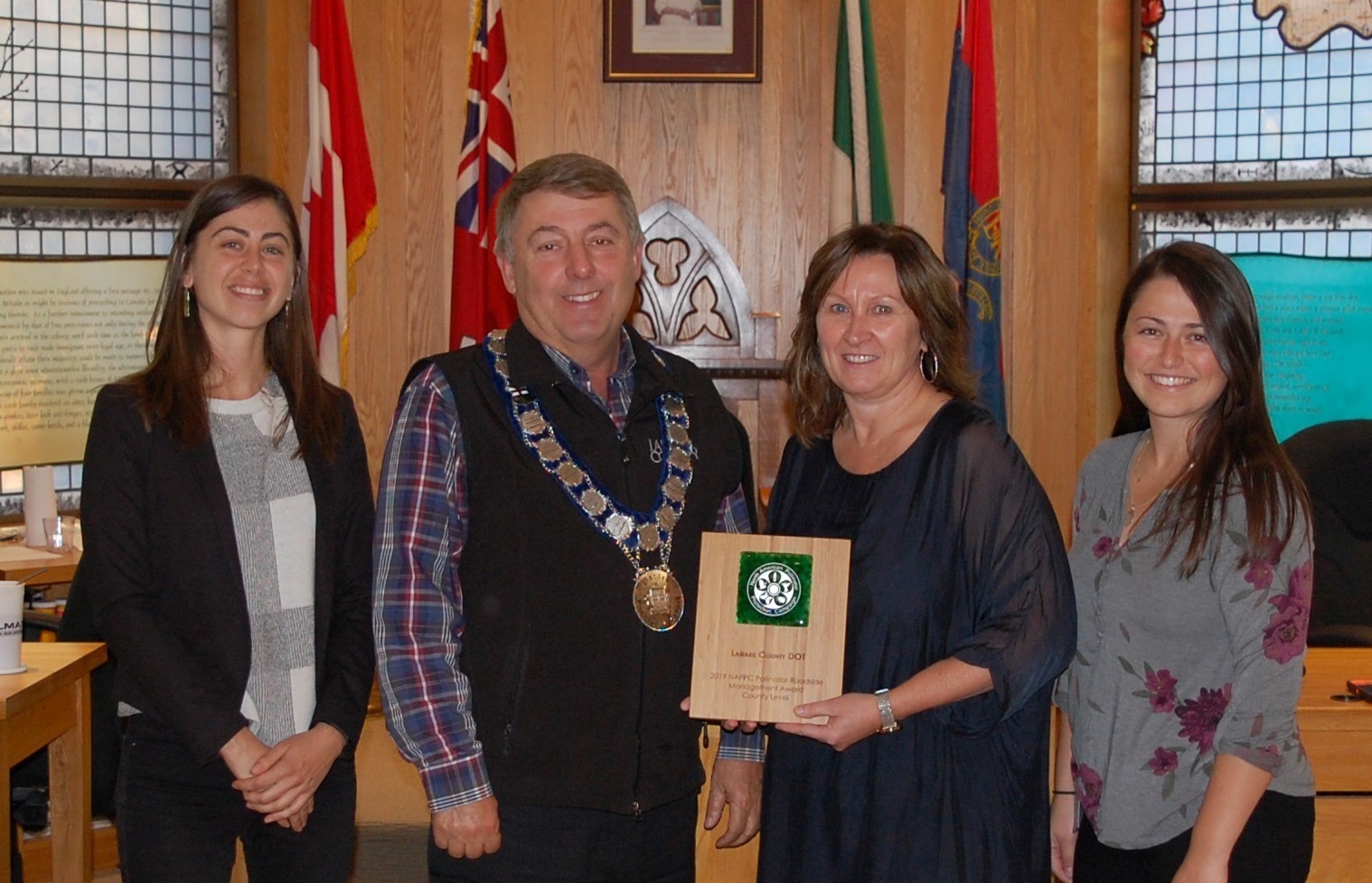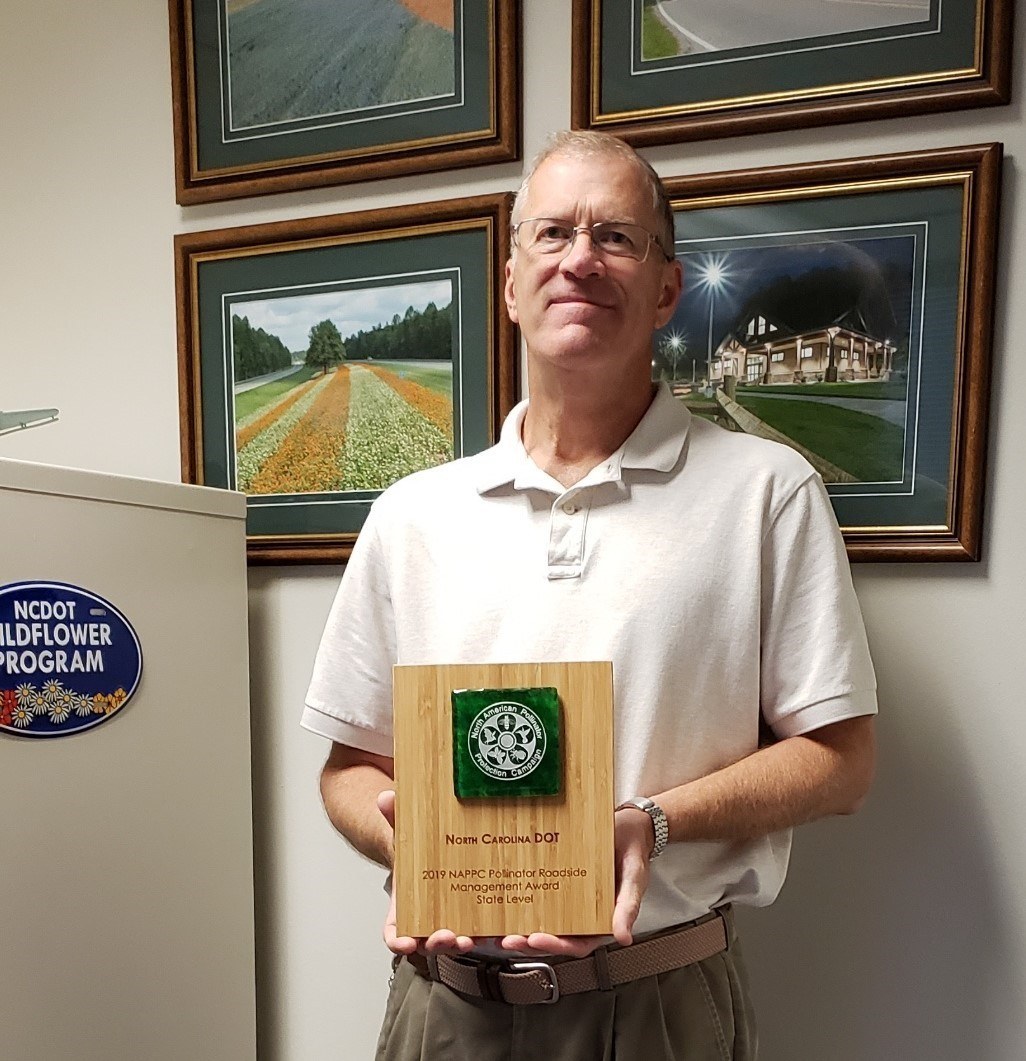2019 NAPPC Pollinator Roadside Management Award Winners
The Corporation of the County of Lanark

Lanark County has implemented roadside maintenance practices that optimize necessary roadside activities and maintain pollinator habitat. Their long-standing mowing schedule reduces mowing in June, July, and August when pollination activities are peaking. The goal of the County’s mowing practice is to reduce the area of the roadside that requires mowing, while still providing safety for road users, but also maintaining good pollinator habitat in the area beyond the mowed section. In addition, broad herbicide application, as a general vegetation control, has not been practiced in Lanark County in over 25 years. As a result, the road allowances in Lanark County grow abundant pollinator habitat naturally, which the County wants to promote everywhere. Lanark County has also provided habitat for pollinators by creating pollinator patches, where they planted over 1,000 pollinator-friendly plants between 2017 and 2018 that bloom throughout the growing season. Lanark County is also participating in the monarch restoration project with the Canadian Wildlife Federation, the goal of which is to produce a technical document to aid roadside managers on how to manage their corridors.
North Carolina Department of Transportation (NCDOT)

NCDOT began its Roadside Environmental Unit Wildflower Program in 1985. The program is still prospering and has created beautiful wildflower beds throughout the entire state of North Carolina. NCDOT is also active at local bee club events and educates the public on pollinators at its annual state fair booth. The additions of horticulture plant bed programs and clear zone improvement programs have bolsters the agency’s efforts in recent years. Pollinator license plates purchased throughout the state help ensure consistent funding for the Roadside Environmental Unit into the future.